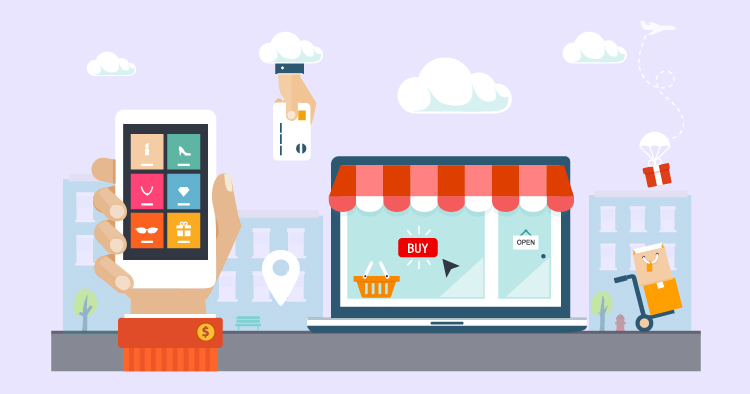E-commerce has changed how we shop, with more businesses moving online to sell their goods and services. Custom e-commerce web development is a game-changer for offering a standout shopping experience. It’s all about creating an online store that fits a business’s and its customers’ unique needs. Custom companies can make their mark, attract more users, and boost their sales. Unlike standard options, a custom approach lets businesses add unique features and functions that make a difference. Let’s dive into how custom e-commerce web development can elevate your online presence.
Understanding the Basics of Custom E-commerce Web Development
When you build an online store tailored just for your brand, you’re looking into custom e-commerce web development. This differs from using ready-made platforms. It gives you complete control over how your site looks and works and how it can grow.
Choosing a custom approach has its perks. It lets your store shine with a unique design, and you can add features that fit exactly what your business and customers need. Plus, you can scale up your site as your business grows, adding new products and payment options or revamping the site to keep customers returning.
Identifying Your Business Goals and Objectives
Before diving into custom e-commerce web development, knowing what you want to achieve with your online store is essential. Having clear goals helps you stay on track, whether you’re looking to boost sales, reach more people, or give your customers a better shopping experience.
To pinpoint your goals, examine the market, understand your customers, and determine what sets you apart. This will guide the development of a site that appeals to your audience and fits your place in the market.
Your e-commerce site should also fit into your more prominent business plans. Think about how you want to grow, how the market might change, and how you’ll keep customers interested.
Creating a User-Centric E-commerce Experience
How people feel when they use your site can make or break your e-commerce business. A site that’s easy to use, looks good and works well on any device can encourage customers to stick around and buy more, which is great for your bottom line.
When designing your site, ensure people can find their way around easily, pages load quickly, and what to do next is straightforward. A smooth, intuitive shopping experience is critical, with simple access to products, an easy checkout, and a site that looks good on phones and tablets.
Select one of over 500 designs and establish your online presence.
- Free Web Hosting
- Fully Managed Solutions
- Scalable Websites
- No Hidden Cost
Adding features like personal accounts, wish lists, and smart search improves shopping for users. High-quality product images, detailed descriptions, and customer reviews can also help customers decide and enjoy their time on your site.
Leveraging Advanced E-commerce Features
Adding advanced features to your e-commerce site can benefit your customers. Imagine seeing how a pair of glasses looks on your face before buying them online or quickly finding the perfect product with intelligent filters. Interactive tools like augmented reality previews and virtual try-ons can make shopping fun and engaging.
When you personalize shopping recommendations or let customers customize products, you speak directly to their unique tastes. This personalized touch encourages shoppers to come back for more. By analyzing what customers have looked at or bought before, you can show them items they’re more likely to buy, creating a more personalized shopping journey.
Automation and artificial intelligence (AI) can also make your business more efficient. Chatbots can answer customer questions instantly, and automated marketing can send messages that feel personal to each customer. AI can help you better understand your customers by analyzing their behavior, leading to more intelligent business decisions and a more engaging shopping experience.
Optimizing for Search Engines and Organic Rankings
Seeing your e-commerce site by more people often starts with search engine optimization (SEO). You can climb higher in search engine rankings by fine-tuning your website’s structure, content, and even the behind-the-scenes tags. This means that when someone is looking for a product you sell, your site is more likely to appear in their search results.
To easily find your product pages and categories, use the right keywords, write appealing descriptions, and ensure each page stands out with unique content. This helps search engines understand and rank your site, making it easier for customers to find you when searching for something you offer.
Creating great content and building links are crucial to improving your site’s reputation and rankings. Regularly sharing helpful blog posts, how-to guides, and product information, along with getting links from respected websites, can signal to search engines that your site is a trustworthy source, boosting your position in search results.
Maximizing Conversion Rates through Effective CTA Strategies
Your call-to-action (CTA) can differentiate between a visitor and a sale. A strong CTA guides customers on what to do next and is crucial to making your e-commerce site successful. It’s not just about telling someone to “buy now” or “sign up”; it’s about creating a sense of urgency and making it irresistible for the customer to take the next step.
When designing a CTA, think about what will catch the customer’s eye and prompt them to act—the words, colors, size, and where you place the CTA all matter. The goal is to make it as easy as possible for customers to move forward, whether buying a product, joining a mailing list, or downloading a guide.
Select one of over 500 designs and establish your online presence.
- Free Web Hosting
- Fully Managed Solutions
- Scalable Websites
- No Hidden Cost
A/B testing is a smart way to determine which CTAs work best. You can fine-tune your approach by testing different versions and seeing which one gets more clicks. This testing provides accurate data, helping you make informed decisions about encouraging more sales.
Integrating Secure Payment Gateways and Ensuring Data Privacy
Trust is everything in e-commerce, and secure payment gateways are a big part of building that trust. They protect customers’ payment information during transactions, essential for convincing customers to buy from you again.
When choosing a payment gateway, consider how well it protects against fraud, what fees it charges, and how easily it fits your current e-commerce setup. The right choice will smooth checkout and reassure customers that their data is safe.
Protecting customer data and respecting their privacy is not just good practice—it’s often the law. Being transparent about how you use customer information and following rules like the General Data Protection Regulation (GDPR) is essential for staying on the right side of the law and making customers feel secure when they shop with you.
Mobile Optimization: Capturing the Growing Mobile Audience
Making your e-commerce website friendly for mobile users is crucial. As more people use their smartphones to shop, your site must work well on these devices. This means your website should load quickly, be easy to use, and have a simple checkout process on a small screen. Shopping on a phone should feel as good as on a computer.
Using responsive design helps a lot. This kind of design makes your website look good on any screen size. Also, having a mobile app can give customers a better shopping experience. They can get features that are more personalized and interactive.
Analyzing and Using Data for Continuous Improvement
Monitoring the performance of your e-commerce site is key to improving it. You’ll want to examine data to see what your customers like and which parts of your site work well. Tools that track visitors’ origins, what they buy, and how they behave can help you make intelligent choices to improve your site.
You can also try A/B testing, which compares two versions of a webpage to see which one works better. This way, you can keep improving your e-commerce site and stay ahead of the competition.
Ensuring Ongoing Maintenance and Support
For your e-commerce website to succeed in the long run, it needs regular care. This means updating the software, fixing security issues, and having tech support ready for any problems. You can have your team for this or work with a development agency.
Choosing to work with an agency can give you peace of mind. They have experts who can ensure your e-commerce site is always working well, allowing you to focus on growing your business without worrying about technical issues.
Final Thoughts
Choosing custom e-commerce web development is a wise investment for any business that wants to shine in the online shopping world. It’s more than just selling products; crafting a shopping journey that feels personal and true to your brand. A custom online store isn’t just tailored to today’s needs—it’s built to adapt and grow with your business. With technology constantly moving forward, having a custom-developed e-commerce site is a solid step toward ongoing success and keeping customers happy.



